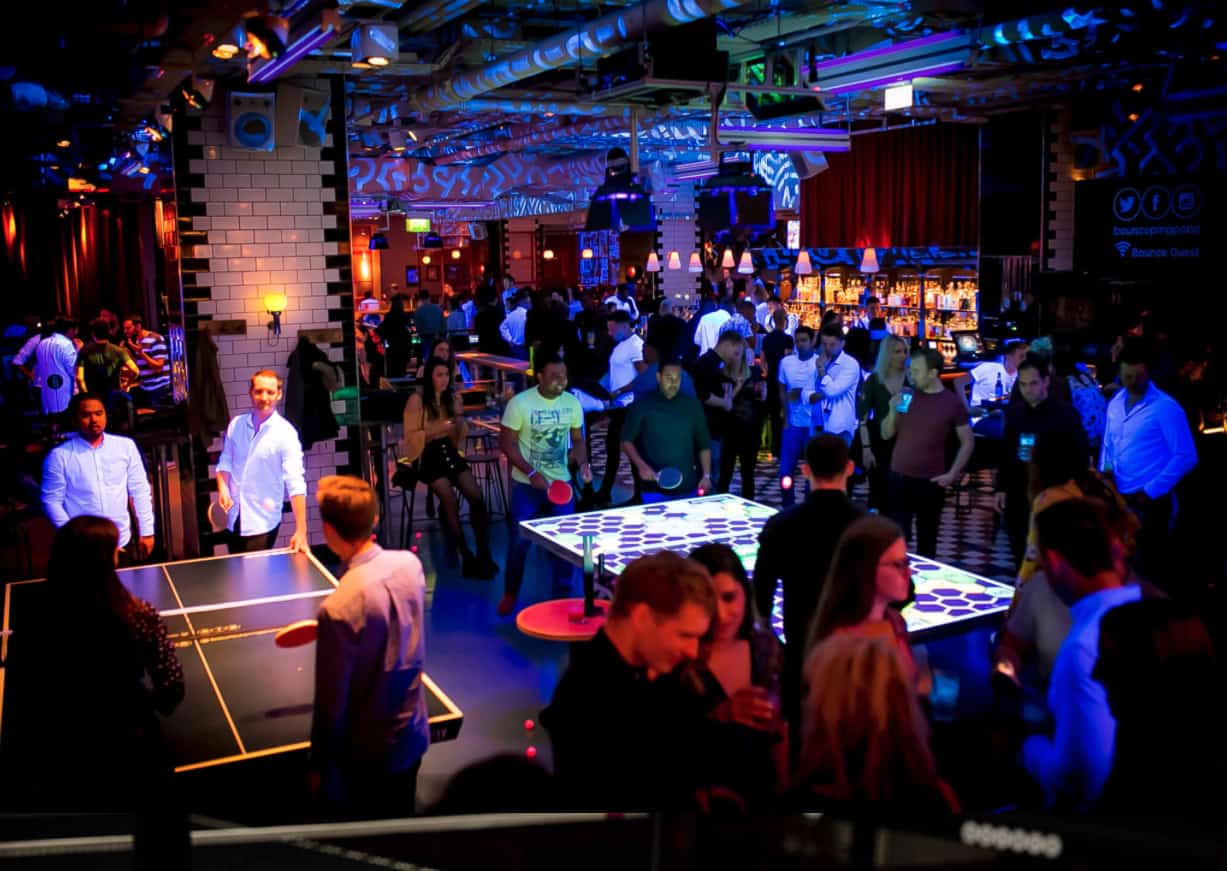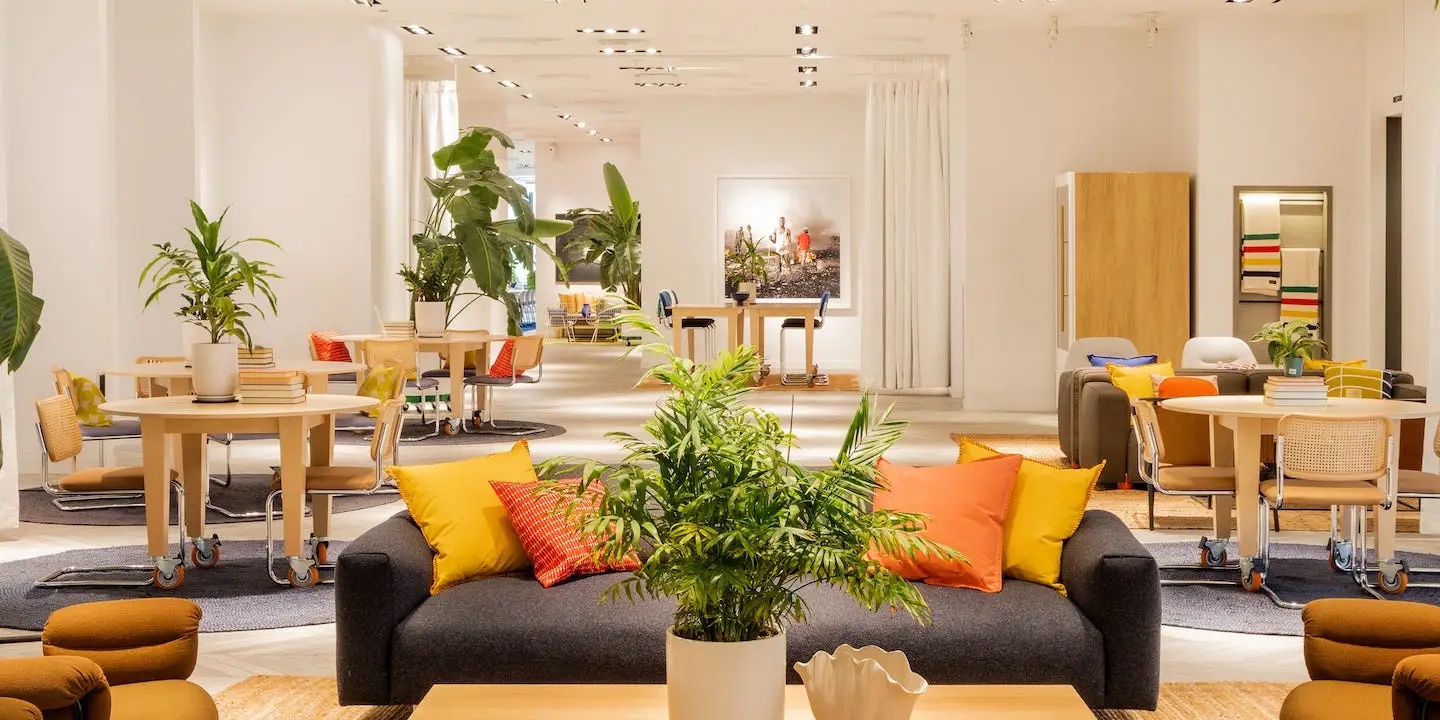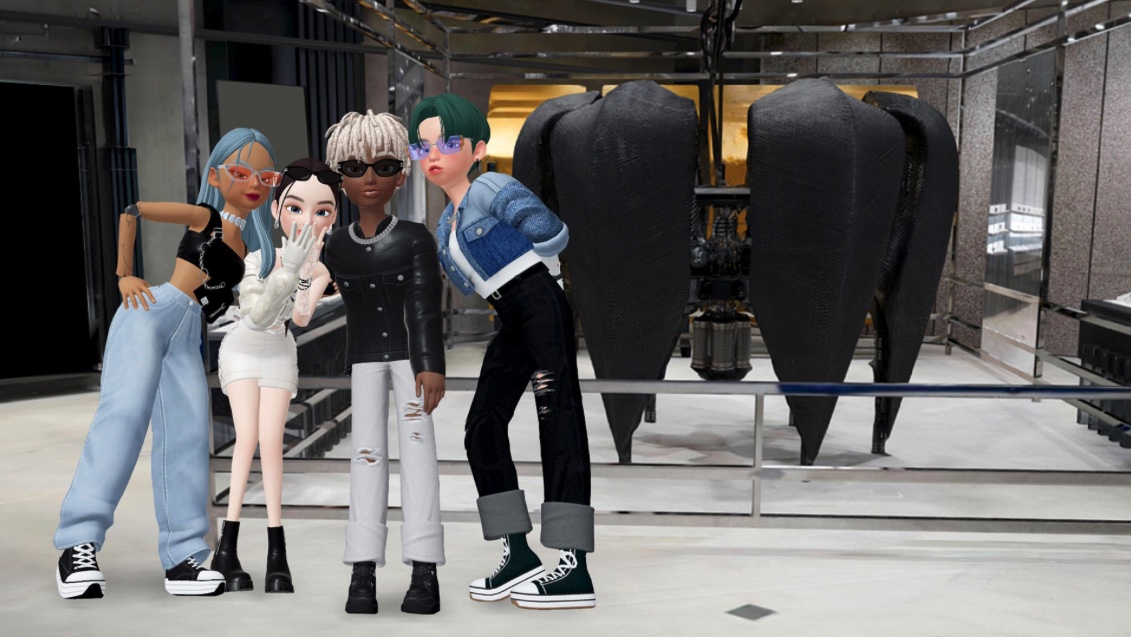As online shopping becomes an increasingly popular form of consumption for customers, retailers have needed to re-evaluate their real estate needs and reassess the motivation for us to interact with their brands “in real life” (IRL). The idea behind convergence focuses on different trends and innovations combining to provide something unique, whether that’s a service, a space or a curated product selection.
Elements of Experience
The thought behind this encourages one to embrace seemingly opposite ideas and concepts to find overlaps between different categories that identify new design opportunities. This can be achieved by breaking down an experience into its elements. Then, you reconstruct it with a better understanding of what’s involved and re-imagining it in a new context.
A recent report of ours on New Retail Partnerships explored how strategic brand collaborations can be a dynamic and powerful formula to attract retail customers. Convergence design explores the synapses between function, form, and finance. It mediates end-user needs and business goals, it unites art and science, and it couples engineering and aesthetics.
So why not start with something familiar to us all? A place replicated in every suburb of every state. Yet, one that has increasingly struggled to sustain relevancy or attract footfall—the strip mall. What different trends and innovations can be brought together to provide an experience that’s truly special?
Let’s first break down some of the retail elements that have traditionally defined our malls. Then let’s explore how brands are re-thinking their approach to dining, entertainment and shopping spaces.
A Feast for the Senses
The expectation of diners has evolved to demand more multi-sensational restaurant experiences. Featuring elements that tell a different story each night of the week—from artistry to music to constantly evolving menus—guests experience something new with each visit. On the luxury end of the scale are concepts like:
- Sublimotion (touted as the world’s most expensive restaurant),
- Atmosphere,
- And So Forth (60 restaurants in Asia), and
- Lio (located in Spain with over 300 creative cabaret artists, chefs, artisans and DJs on staff).
Key to the success of all of these concepts is a rich variety of programming. Each provides new content on a regular basis, plus prioritizes a local spin in attempt to “unchain” the chain.
Social Engagement
In contrast to these highly sensory dining experiences is the digital mastery of projection concepts that seek to entertain, like ArtecHouse, Atelier Des Lumiers’ Van Gogh Exhibition in Paris or Borderless by TeamLab in Tokyo, that have evolved the concept of the Museum of Ice Cream from ‘grammable’ to something more ‘memorable’. The highly creative and sophisticated AR / VR that they feature enables guests to interact with the installations so that their experience of the exhibit is both personal and non-replicable. Additionally, their artworks interact with one another, converging to create unique expressions and effects that you may not experience on a second visit.
It’s becoming increasingly clear to me that, contrary to what we first assumed, customers aren’t looking for a digital detox when they visit the physical store. In fact, many want to experience the world digitally in a physical and social environment, leading to new convergent concepts that aim to stimulate the senses. We must create a more integrated, hybridized experience if we are to embrace—instead of fear—the opportunities brought by the great digital migration from physical store to online.
This idea is gathering momentum where entertainment meets the bar scene, with sophisticated, tech-enabled, experiential social venues. If 36% of Gen Z are likely to pay more for a well-designed, fun food and beverage experience, it’s no wonder that a range of new venues are opening, like State of Play’s Putt Shack & Flight Club, Swingers (now open in DC), Sixes Cricket (coming to the USA soon), Smoky Barrels (a whiskey and virtual hunting concept using Scandinavian VR gaming) and Electric Gamebox, which promises an interactive digital room featuring projection mapping, touch screens, motion tracking and surround sound to enjoy an immersive adventure.

The Art of Shopping
All the above set the stage for a conversation on ‘Retail-tainment’, however beyond the notion of ‘play’, I would rather share some interesting brands seeking to provide a more cultural interaction to deepen their relationship with the customer. Merging many of these concepts is Hong Kong based K11 Mall, which blends Art Spaces with retail, providing luxury playgrounds for retail shoppers in a nature inspired environment, as seen in their Art Mall Museum in Shanghai. Their KLL Collection has matured over the past 10 years into a permanent collection of art, with over 50 pieces including works from international masters Damien Hirst, Olafur Eliasson, Teppei Kaneuji and Yinka Shonibare. It steps commercial retail well beyond consumption of commodities, seizing an opportunity to connect the community with culture and the arts.
We have seen this approach applied at a store level by Gentle Monster, a Korean eyewear brand that has created abstract metaphors for each store over the past decade and continues to evolve the themes. Their approach not only surprises and delights customers, it also makes us think beyond the product itself for a deeper explanation behind what we see…where store becomes interactive gallery. This progressive retailer has now created one of the world’s first photo scanned Metaverse stores called HAUS Dosan which allows users from all over the world to visit the recreated space as a Zepeto avatar.
Rebuilding Retail
So how could these elements of socialization, work, shopping, entertainment and experience re-converge to provide a more relevant shopping environment that serves our needs today and deepens your connection with customers? Hudson Bay Company’s new urban social club ‘SaksWorks’ aims to do just that by providing its members everything they need on-site, virtually all day. It features flexible meeting and restaurant spaces, cafés and fitness studios in a highly stylized environment. Members will be able to have hair and beauty treatments on-site, a mid-afternoon stretch session or cocktails with friends at SaksWorks’ bar.

If we applied a similar approach to a suburban strip mall, what would that look like? How could we re-define the purpose of these centers to better serve our neighborhoods and encourage the community to re-engage with our existing real estate and local brands?
Physical & Digital Twins
Previously architects, designers, and engineers have adopted building information modeling to bring these ideas to life in the physical world. Now, they can leverage a digital lifecycle beyond the construction program.
Scaling out the idea of McDonalds’ new Metaverse Restaurant, what if we started by building out a digital twin of our future urban strip malls or mixed-use centers in the Metaverse? Inviting shoppers into the space would prime the community for what is to come, engaging their interest and helping understand their needs while providing a revenue stream before construction has even begun. Once built, the development’s digital twin could still co-exist and evolve, offering alternate environments for retail brands to co-exist.
This, combined with a digital engagement platform, could better connect local brands to local shopping centers for easier fulfillment while introducing new brands to a mall. Considering that no less that 100,000 virtual food brands have been created over the past two years within North America alone, it’s no wonder we’re seeing a proliferation of new ideas emerge, recently spawning convergent concepts including: a Crypto Foodcourt, TikTok’s Kitchens Concept, KFC’s Apparel Store in China, Pepsi’s Food Pairings Concept, and Curb’s Virtual Food Court.
The intersections between where we Eat, Work, Live and Shop are where the magic of an experience unfolds and where we can truly elevate the performance of our clients and their customers. We have an opportunity to rethink our suburban malls and retail centers by designing more regenerative solutions that reduce energy consumption, shorten supply chains and better serve our needs now and in the future.
Working together to elevate your performance
Ask us how integrative design methodologies help our trans-disciplinary teams embrace these concepts and move us ever closer to meeting our regenerative goals. Enjoy the Convergent Trend Report, which focuses on several examples beyond architecture, including topics related to Social Impact, Well-being, and Sustainability practices.

